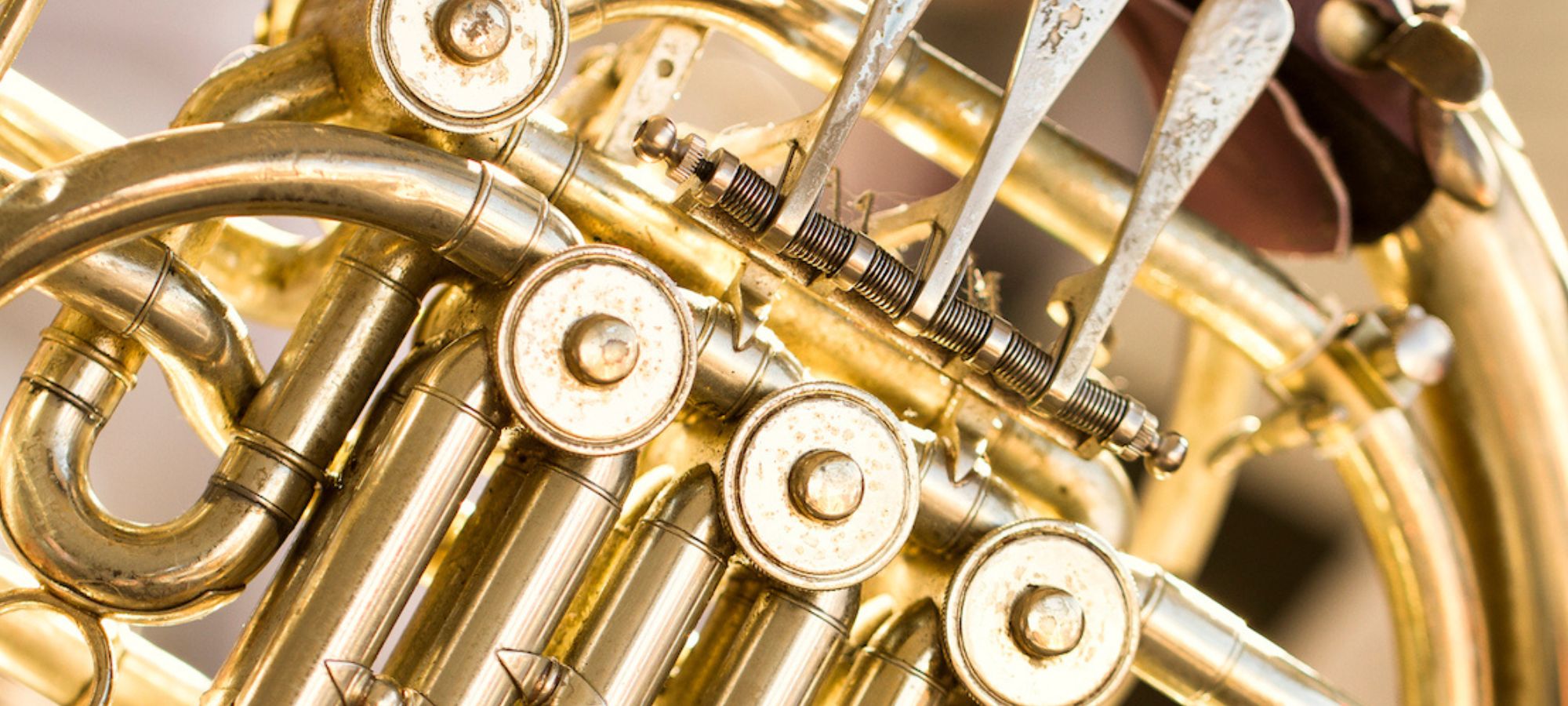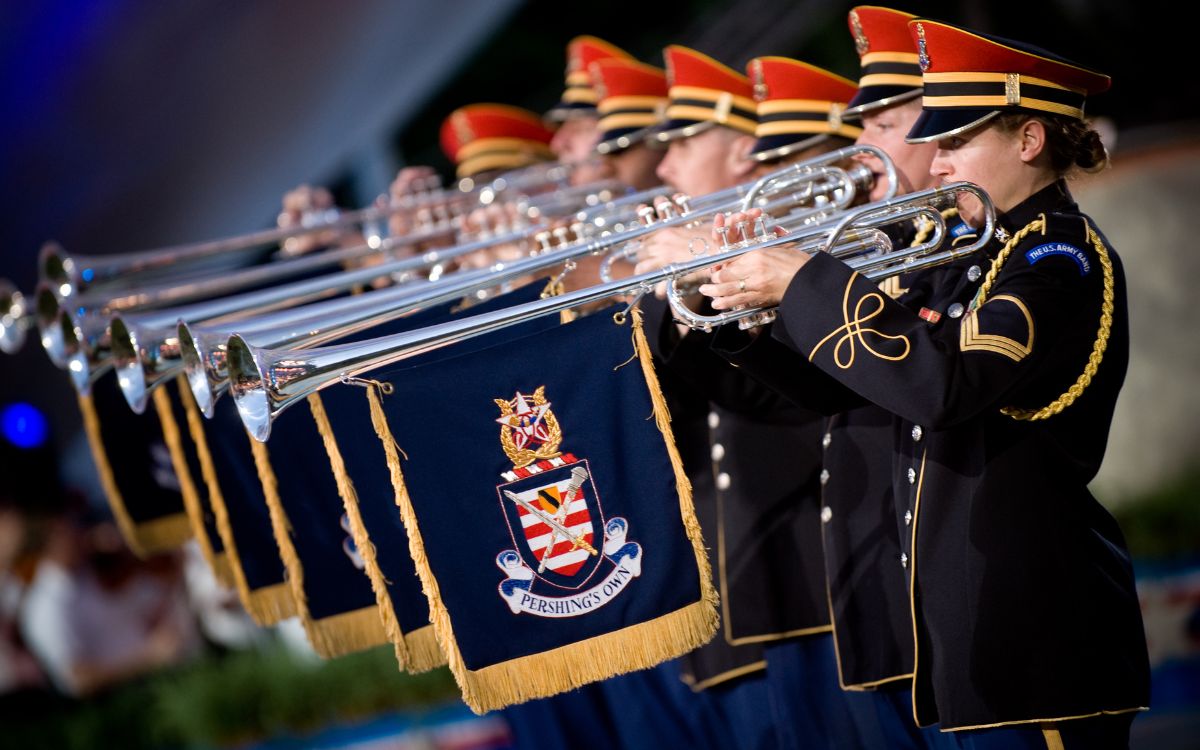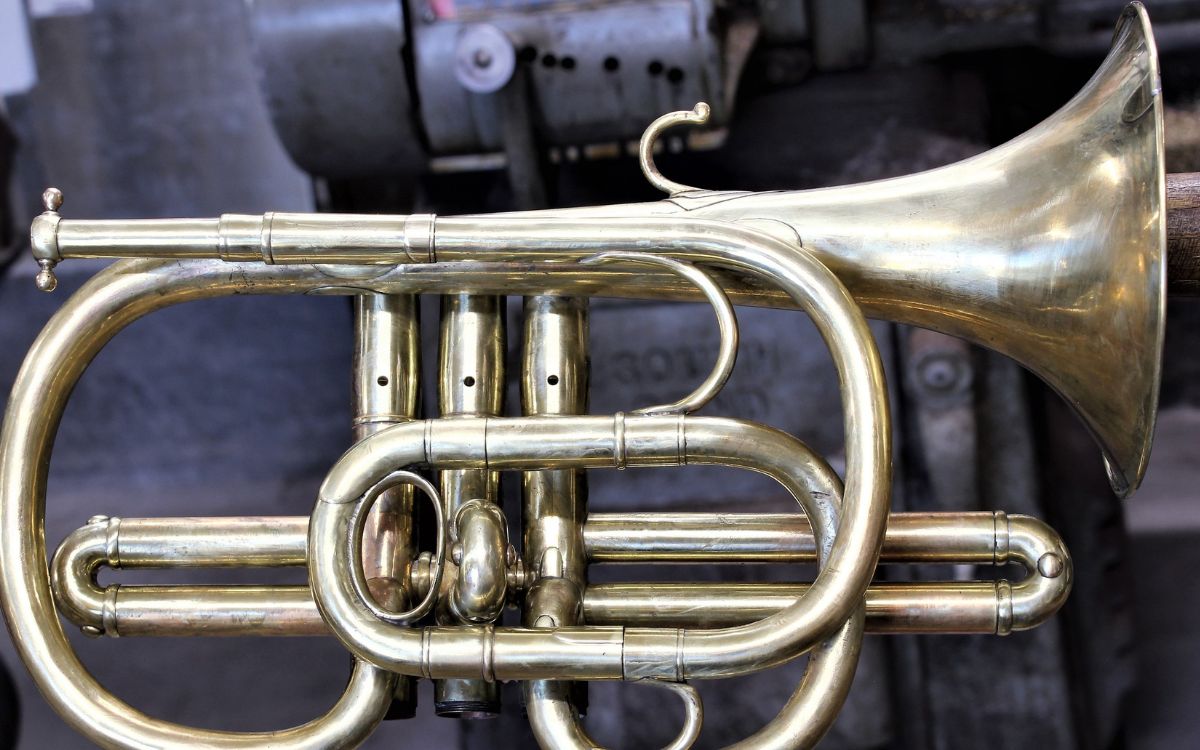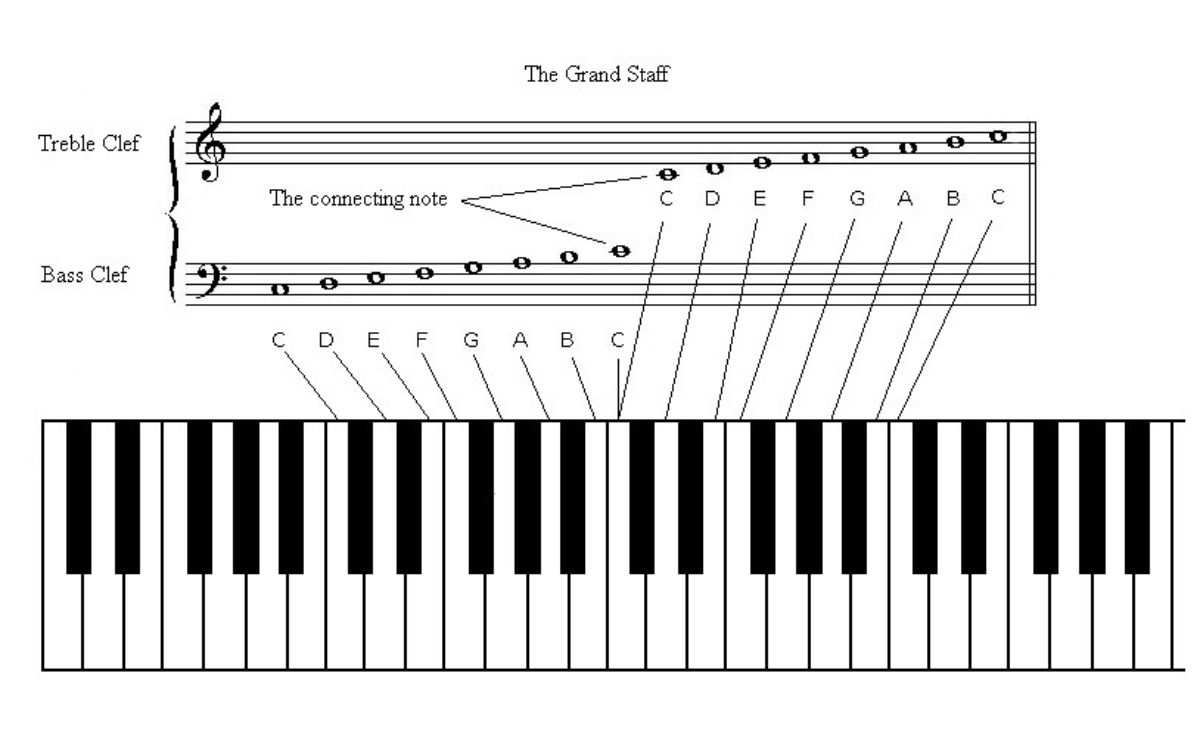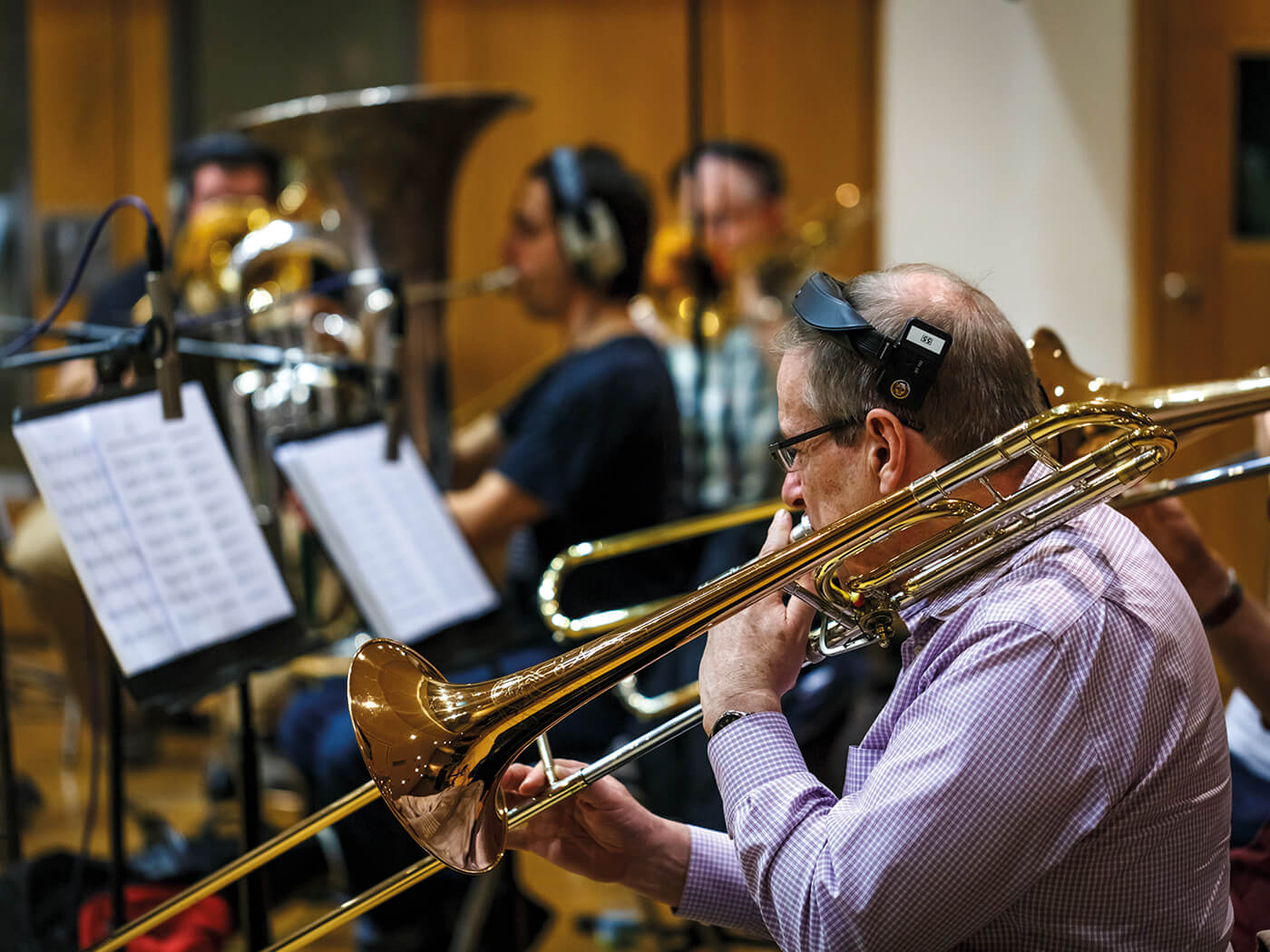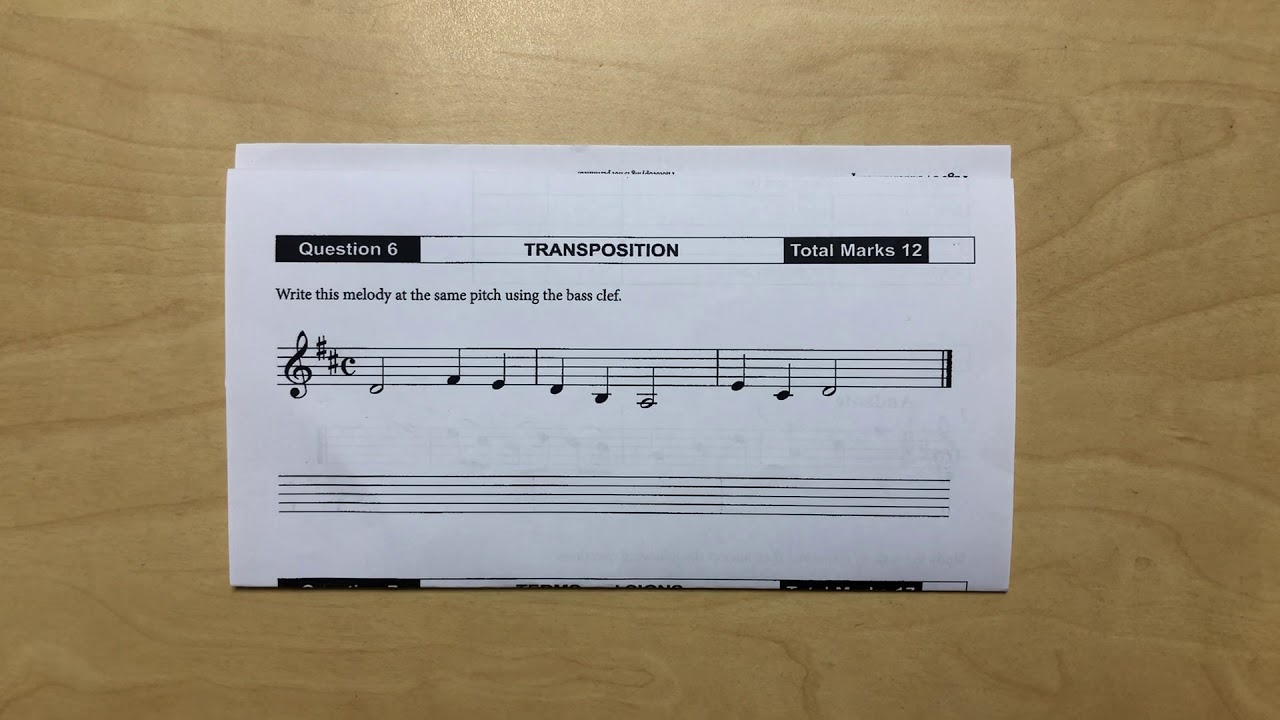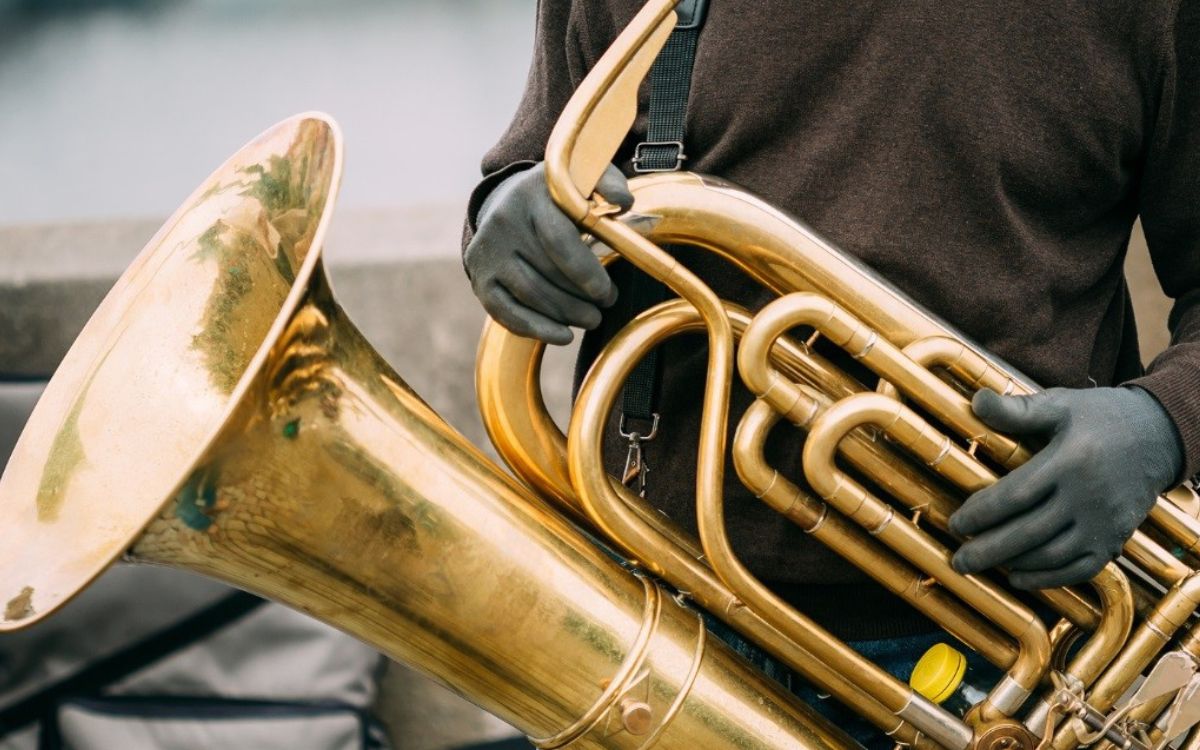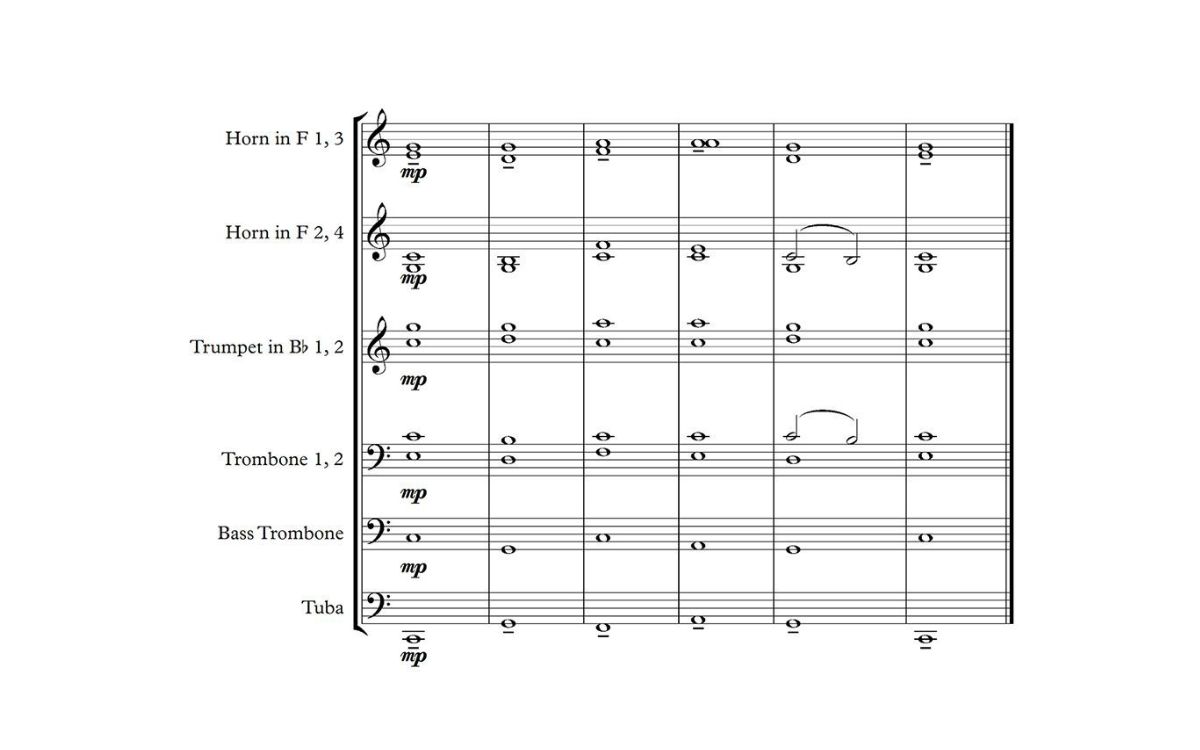Home>Instruments>Brass Instruments>What Brass Instruments Use Bass Clef
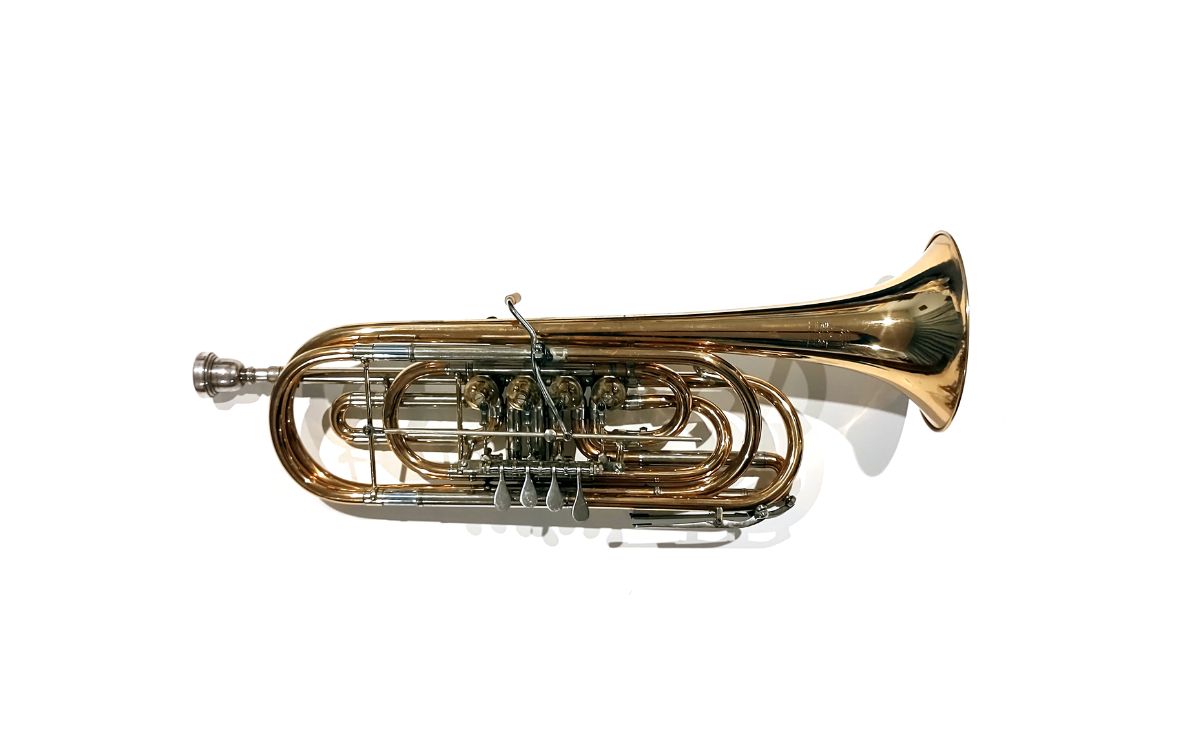

Brass Instruments
What Brass Instruments Use Bass Clef
Modified: January 22, 2024
Learn about the brass instruments that use the bass clef, including tuba, trombone, and baritone. Master the fundamentals of playing brass instruments in the bass range.
(Many of the links in this article redirect to a specific reviewed product. Your purchase of these products through affiliate links helps to generate commission for AudioLover.com, at no extra cost. Learn more)
Table of Contents
Introduction
When it comes to brass instruments, one of the essential elements in understanding how to read and play them is the use of clefs. Clefs are musical symbols used to indicate the pitch range of the notes on a staff. The most common clefs used in music notation are the treble clef and the bass clef. While the treble clef is widely known as the “G clef” due to its distinctive shape, the bass clef, also known as the “F clef,” plays a crucial role in the world of brass instruments.
The bass clef is often associated with low-pitched instruments and serves as a reference point for their notation. It helps musicians identify and read the notes that fall within the lower register. Understanding which brass instruments use the bass clef is essential for both aspiring players and music enthusiasts who want to dive deeper into the world of brass sounds.
In this article, we will explore the brass instruments that utilize the bass clef and shed light on their unique qualities and characteristics. Whether you are a trombone enthusiast, tuba player, or curious about other brass instruments, this guide will provide you with insights into how the bass clef influences the music they produce.
The Basics of Clefs
Before delving into the specific use of the bass clef in brass instruments, it is important to understand the basics of clefs in music notation. Clefs are symbols placed at the beginning of a staff to indicate the pitch range of the notes that follow. They serve as a reference point for musicians to identify and read the notes accurately.
The treble clef, also known as the G clef, is the most commonly used clef in music notation. It is easily recognizable by its distinctive spiral line curling around the second line from the bottom of the staff. The treble clef is typically used for instruments with higher pitch ranges, such as the flute, trumpet, and violin.
On the other hand, the bass clef, also known as the F clef, is characterized by its two dots flanking the fourth line from the top of the staff. It is commonly used for instruments with lower pitch ranges, including many brass instruments.
By placing notes on specific lines or spaces within the staff, clefs provide information on the pitch and position of each note. Instruments that utilize the bass clef produce lower sounds, and the bass clef serves as a guide for accurately reading and playing these notes.
It’s important to note that while the treble clef and bass clef are the most commonly used clefs, there are other clefs used for different instruments or special musical techniques. However, for the purpose of this article, we will focus on the bass clef and its relationship with brass instruments.
The Bass Clef in Brass Instruments
In the realm of brass instruments, the bass clef plays a vital role in determining the pitch and range of the notes played. Unlike other instruments that may use different clefs, brass instruments primarily use the bass clef as their main reference point.
As the name suggests, brass instruments are made primarily of brass or other metal alloys and produce sound through the vibration of the player’s lips against a cup-shaped mouthpiece. The size and shape of the instrument determine its pitch range, with larger instruments producing lower notes and smaller instruments producing higher notes.
The use of the bass clef in brass instruments allows the notation of these lower-pitched sounds in a clear and organized manner. It provides a visual representation of the notes to be played and ensures accurate performance and ensemble coordination.
Brass instruments require a firm understanding of the bass clef to navigate through the lower register effectively. Musicians need to be adept at reading the notes, understanding the specific techniques required, and controlling their breath and embouchure to produce the desired sound.
The bass clef not only helps brass players read and interpret the music, but it also aids in developing their musicality and understanding of musical theory. By being exposed to the bass clef, brass players gain a deeper understanding of the interplay between notes and develop a sense of pitch and harmony.
Overall, the bass clef is a fundamental component of brass instruments, providing the necessary framework for players to produce the rich, low-pitched sounds characteristic of these instruments. Its usage is integral to the proper execution of music and assures the cohesion and harmony within brass ensembles.
Brass Instruments that Use the Bass Clef
Now that we understand the significance of the bass clef in brass instruments, let’s explore some specific instruments that utilize this clef. These instruments produce deep, resonant tones and are essential components of any brass ensemble.
Trombone
The trombone is a versatile brass instrument that uses the bass clef as its primary notation. With a distinctive slide mechanism that allows for variable pitch control, the trombone covers a wide range of pitches within the bass clef. From mellow and smooth melodies to bold and powerful glissandos, the trombone adds depth and character to any musical composition.
Tuba
The tuba, often considered the “grandfather” of the brass section, is the lowest-pitched instrument in most orchestras and bands. This large, tubular instrument produces powerful and commanding bass tones. The tuba player reads the bass clef to navigate through the instrument’s extensive lower register and provide the foundation for the ensemble.
Bass Trombone
The bass trombone, a variation of the trombone, specializes in producing even lower notes within the bass clef. It is larger in size and has additional features, such as an extra valve, to extend its lower range. The bass trombone brings depth and richness to the brass section, often providing a strong bassline or playing contrasting melodies in a brass ensemble.
Euphonium
The euphonium, sometimes referred to as the “tenor tuba,” is a brass instrument that shares similarities with both the trombone and the tuba. It serves as the middle voice in a brass ensemble, blending with other instruments to create a warm and melodious sound. The euphonium player reads the bass clef, covering a range that overlaps with both the trombone and tuba, but with its own distinct tonal character.
While these are some of the prominent brass instruments that use the bass clef, it is important to note that other instruments, such as the baritone horn, bass trumpet, and sousaphone, also fall into this category.
Understanding the specific instruments that utilize the bass clef is not only important for players but also for composers, arrangers, and music enthusiasts. It allows for accurate notation, effective ensemble writing, and better appreciation of the unique musical qualities that brass instruments bring to performances and compositions.
Trombone
The trombone is a fascinating and versatile brass instrument that holds a prominent place in the world of music. With its signature slide mechanism, the trombone offers players the ability to produce a wide range of pitches and expressive glissandos. It is a crucial member of any brass ensemble, orchestra, or marching band.
As mentioned earlier, the trombone primarily uses the bass clef as its main notation. The notes written in the bass clef guide trombone players through the instrument’s lower register, which is where its rich and sonorous tones are found.
By manipulating the slide, trombonists can adjust the length of the tubing and, consequently, the pitch of the instrument. This gives the trombone great flexibility in playing various musical genres, from classical and jazz to pop and rock.
The trombone’s distinct sound is characterized by its smooth, warm, and unmistakable timbre. It has the unique ability to blend seamlessly with other brass instruments while still maintaining its individuality in a musical ensemble.
Trombonists, proficient in reading the bass clef, become adept at navigating through the instrument’s wide range. They must master techniques such as slide positions, tonguing, and proper breathing to produce accurate and expressive performances.
In an orchestral setting, the trombone often takes on various roles, ranging from playing harmonies and accompaniment to powerful solo moments. It is an essential component of the brass section, adding depth and resonance to the overall sound of the ensemble.
Whether it is performing intricate melodic passages, executing energetic and rhythmic figures, or providing rich harmonic support, the trombone’s capability to produce low notes in the bass clef makes it indispensable to countless musical compositions.
From the expressive and soulful solos of jazz greats to the majestic and grandiose symphonic passages, the trombone captivates listeners with its versatility and tonal qualities.
Thus, the trombone stands as a shining example of a brass instrument that skillfully uses the bass clef to create melodic, expressive, and powerful sounds that resonate with audiences worldwide.
Tuba
The tuba, often called the “king” of the brass instruments, is known for its commanding presence and rich, resonant sound. It is the lowest-pitched instrument in most orchestras and bands, providing a strong foundation for the ensemble.
When it comes to notation, the tuba relies heavily on the bass clef. The notes written in the bass clef guide tuba players through the instrument’s extensive lower register, where it produces deep, rumbling bass tones that are felt as much as they are heard.
With its large size and conical shape, the tuba is designed to produce a powerful and grand sound. It requires a strong embouchure and a skilled player to control the airflow and produce precise pitches within the bass clef.
Often played with a cup-shaped mouthpiece, the tuba’s distinct sound can range from warm and mellow to bold and majestic. Its deep resonating tone adds depth and gravity to any musical piece it is a part of.
As a foundational instrument, the tuba serves as the anchor of the brass section, providing the fundamental bassline that supports the harmonic structure of the music. It is a crucial component in creating a balanced and full-bodied sound in orchestras, wind ensembles, and marching bands.
The tuba performs a wide range of musical roles, from providing a solid bass foundation to playing melodic lines and solos. Its versatility allows it to adapt to different musical genres, including classical, jazz, and tuba-centric ensembles.
Playing the tuba requires a strong command of the bass clef, as it allows the musician to navigate the vast range of the instrument. Tubists must have a deep understanding of musical notation, as well as the ability to read bass clef quickly and accurately.
Overall, the tuba’s utilization of the bass clef is integral to its role as a dominant force in the world of brass instruments. Its ability to produce low, resonant notes in the bass clef contributes to the instrument’s unique sound and its crucial place in various musical settings.
Bass Trombone
The bass trombone is a remarkable instrument that adds depth and richness to the brass section. It is a larger version of the tenor trombone, with additional features and capabilities that expand its lower range.
Similar to the trombone, the bass trombone utilizes the bass clef as its main notation. The bass clef guides bass trombone players through the instrument’s extended lower register, allowing them to produce even deeper and more resonant sounds.
One of the defining characteristics of the bass trombone is its additional valve system. This valve, often called the F attachment or the rotor, enables the player to play additional notes below the slide’s lower range, effectively expanding the instrument’s capabilities in the bass clef.
The bass trombone’s unique blend of power and flexibility makes it a versatile instrument across various musical genres. It can provide a solid foundation in ensemble playing, add richness to brass sections, and deliver expressive solos.
With its lower, more robust sound, the bass trombone often plays a crucial role in creating harmonic depth and adding a sense of gravitas to the music. It can deliver impactful basslines, complement melodic passages, and provide contrasting timbres within an ensemble.
Mastering the bass trombone requires not only a solid command of the bass clef but also mastery of the instrument’s extended lower range. Bass trombonists must navigate complex slide positions, valve combinations, and alternate fingerings to accurately produce the desired notes within the bass clef.
Whether performing in symphony orchestras, jazz ensembles, or other musical settings, the bass trombone’s presence is felt throughout the compositions. Its ability to produce deep, resonant notes in the bass clef adds richness and sophistication to the overall sound.
The bass trombone is a crucial component of any brass section, standing alongside the trombone, tuba, and other brass instruments. Its unique sound and facility in the bass clef make it an essential part of any ensemble striving to achieve a full, well-rounded sound.
Overall, the bass trombone’s utilization of the bass clef enhances its role as an instrument capable of producing powerful, low-pitched sounds. Its expressive capabilities and extended range allow bass trombonists to bring depth and versatility to any musical performance.
Euphonium
The euphonium, also known as the “tenor tuba,” is a unique brass instrument that bridges the gap between the trombone and the tuba. It possesses a mellow and rich sound and finds its place as a vital member of brass ensembles, concert bands, and marching bands.
Similar to other brass instruments, the euphonium relies on the bass clef for notation. The instrument’s range mostly falls within the bass clef, allowing euphonium players to produce warm and expressive sounds in the lower register.
Equipped with a conical bore and a cup-shaped mouthpiece, the euphonium delivers a smooth and lyrical timbre. Its sound can range from sweet and melodic to grand and commanding. The euphonium’s rich tone quality adds depth and richness to any musical composition it is a part of.
The euphonium holds an essential role in the brass section, often being assigned melodic lines, harmonies, or countermelodies. It contributes to the overall harmonic structure and blends harmoniously with other brass and woodwind instruments.
Being proficient in reading the bass clef is crucial for euphonium players. They must navigate seamlessly through the notes written in the bass clef, controlling their breath and embouchure to produce accurate pitch and smoothly connected phrases.
Due to its versatile range and melodic capabilities, the euphonium has opportunities to shine as a solo instrument within ensemble settings. Euphonium solos are often lyrical and soulful, showcasing the instrument’s expressive qualities.
Whether performing in orchestras, wind bands, or chamber ensembles, the euphonium’s usage of the bass clef ensures its ability to provide a full and rich sound in the lower range. Its presence enhances the overall depth, color, and character of the ensemble performance.
The euphonium is a versatile and expressive instrument that demands skillful playing and a thorough understanding of the bass clef. Its ability to produce melodious and resonant notes within the bass clef range makes it an indispensable member of any brass ensemble and elevates the overall musical experience.
Conclusion
The use of the bass clef in brass instruments is a fundamental aspect of reading and playing these extraordinary instruments. Understanding which brass instruments utilize the bass clef is essential for musicians, composers, and music enthusiasts alike.
From the trombone and tuba to the bass trombone and euphonium, these instruments rely on the bass clef to navigate their respective lower registers. The bass clef serves as a guide, ensuring accurate pitch recognition, precise notation, and cohesive ensemble performance.
The trombone, with its versatile slide mechanism, produces a wide range of pitches within the bass clef, adding depth and character to any musical composition. The tuba, known for its commanding presence, anchors the brass section with its powerful bass tones and relies heavily on the bass clef for notation.
The bass trombone, a variation of the trombone, extends the lower range even further within the bass clef, providing richness and depth to the brass ensemble. The euphonium, with its warm and mellow sound, utilizes the bass clef to create expressive melodies and harmonies, adding depth and sophistication to musical compositions.
In conclusion, the bass clef plays a crucial role in the world of brass instruments, facilitating accurate notation, precise performance, and a deep understanding of musical theory. Whether playing the trombone, tuba, bass trombone, or euphonium, proficiency in reading the bass clef is essential for brass players to excel in their craft and contribute to the richness and diversity of the brass ensemble sound.
By grasping the significance of the bass clef in brass instruments, musicians can fully embrace the unique qualities and expressive capabilities of these captivating instruments. The bass clef serves as a roadmap, guiding brass players to produce powerful, resonant, and harmonically intricate musical performances.
So, whether you’re a seasoned brass player, an aspiring musician, or an avid listener, dive deeper into the world of brass instruments and experience the captivating sounds nurtured by the bass clef.

